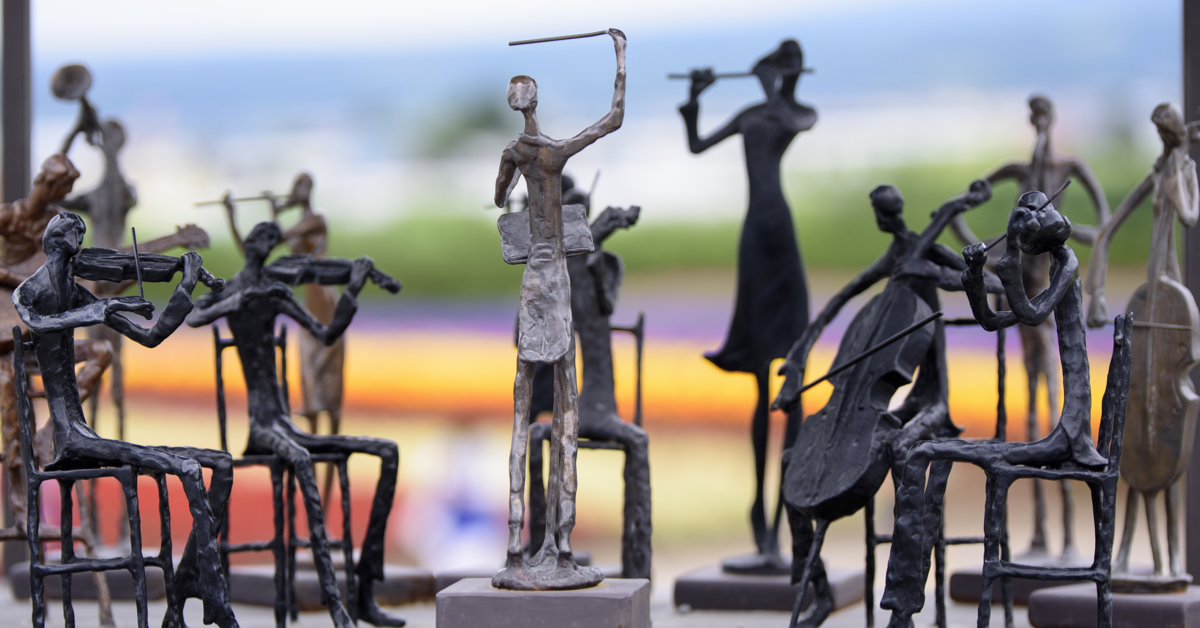One of the most important decisions we make when creating a new song is instrumentation. Putting time and thought into this decision can make a huge difference in the result.
For you to understand what I mean, let's think of an example. Do you know the song La vie en rose? Let's hear two versions of the same song.
First, the original arrangement is for piano, some strings, and winds:
Second, this acoustic version which has only guitar and voice:
The experience of listening to the same song can be very different due to instrumentation. On the one hand, the first version feels more intense and sublime. On the other hand, the second version is more intimate and sweet.
Now the question is: how to chose the instrumentation for a song or an arrangement? There are many answers to that question. But there are some aspects to consider that will help you find the right fit.
1. The "soul" of the song
Determine what the soul of the song is. By this I mean the core intention, emotion, and story of it. You can write on a piece of paper the ideas that come into your mind to have them as a reference.
Some questions that can help are:
- What is the story? Is it an epic story? Is it a love story?
For instance, if the story is about an epic war, the percussion and brass give that feeling of struggle. This because percussions can evoke the march of soldiers. And brass instruments were often used by the military.
- If that song had a personality, how would you describe it?
If it was a playful little kid, the flute or a marimba could be a great fit. But if it is more like a femme fatal, a saxophone or trumpet might be a better choice.
- Try to determine the different characters in the piece, if they are more than one, and assign an instrument for each character.
The characters don't have to be necessarily persons. For instance, imagine a song about a man. This man, who is in political asylum abroad, deeply misses his country. So, one character is the man, another one is the solitude he feels, and the last one is the memories of his beloved country.
2.The landscape, the setting of the song
If the song tells a story, where does this story take place?
Where would you like to transport your audience when they hear the song?
Thinking about the landscape and settings can help you figure out what you need to reproduce that in your song, and make it an audible experience.
Let's take The Carnival of the Animals - VII. Aquarium by Saint-Saëns.
Did you like it?
The strings have a fluid sound reminiscent of water, and the piano evokes the different creatures or animals. Doesn't this song make you feel in an aquarium? It does to me.
One element we tend to forget is to add some instruments to bring different textures to our song. In Saint-Saëns you can hear the triangle, which gives a very subtle detail, reinforcing that watery feeling.
3.The range of the instruments
Before choosing the instruments, it is vital to consider their range. We shouldn't think of using a clarinet (soprano) for very low melodies (tenor), in which case it would be better to use a trombone.
To give you an idea of the range of the instruments, here is a basic list:
- Soprano: flute, violin, soprano sax, trumpet, clarinet...
- Alto: alto sax, french horn, alto flute, alto clarinet, viola.
- Tenor: trombone, tenor saxophone, guitar.
- Baritone: baritone saxophone, bass clarinet, cello, euphonium.
- Bass: contrabas, bass sax, tuba.
4.The Genre
Each genre has a determined structure among other particular characteristics that differentiate one gender from another. One of those characteristics is the instrumentation. So, if you want to create a song in a specific genre, check out the typical ensemble for that genre.
One piece of advice: don't be afraid to explore. For instance, a jazz ensemble typically consists of saxophones, trumpets, drums, piano, bass, and guitar. But what if you add an unusual instrument in jazz like a harp? Well, you can end up with a beautiful result like this:
To finish, I want to give you some last tips:
- Start with an instrument you know
Even if you create a song with many instruments, start using the one you know the best. Then you can concentrate on the creative part, rather than on understanding how an instrument you are not so familiar with works.
- Experiment, A LOT
Don't be afraid to explore different ensembles for your song. By trying different options, you are more likely to find the one that best fits your song. Also, record all your experiments so you can keep them as reference. I can't tell you how many times I had an idea that I didn't like, but I did like one section in particular. And because I erased it before finishing my song, I lost it completely.
- Look for what worked for other composers
My biggest advice is: listen to a lot of music, consciously. Pay attention and try to understand how the compositor thought.
Thanks for reading and see you next time!
Best,
